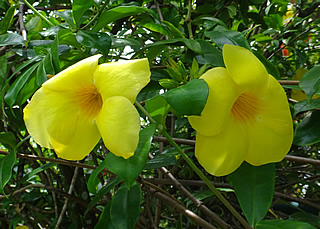

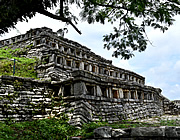
A great day taking in a wonderful fiesta in Yohualichan and the impressive Gulf Coast-style ruins.
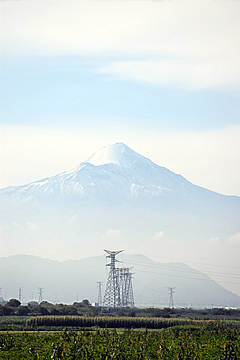
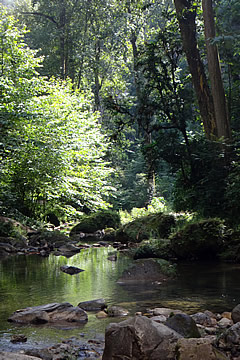
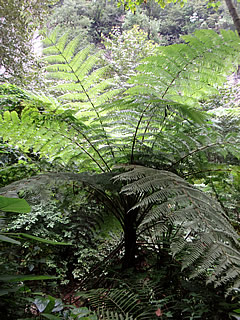
We were saying in Puebla and set off very early one morning to visit the ancient site of Yohualichan and the town of Cuetzalan.
We passed through beautiful landscape, with clear views of the volcanoes Popocatepetl and Iztaccihuatl which stand close together not far from Puebla.
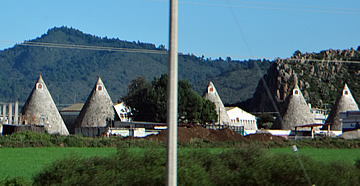
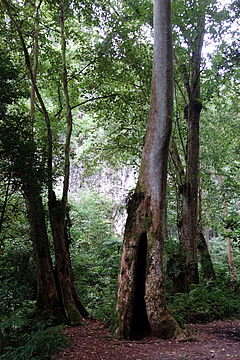
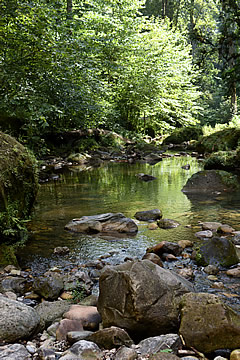
Later we were able to see the highest volcano and highest mountain in Mexico - Pico di Orizaba or Citlaltepetl which is Nahuatl for star mountain. Nahuatl is the ancient language of the Aztecs and is still spoken by many, especially in the areas we were visiting today.
The drive was through a lovely fertile landscape. A huge plain seemingly covered with maize fields and dotted with trees and colonial haciendas.
About 30km south west of Cuetzalan we stopped to visit La Gloria, a lovely waterfall dropping into a blue pool reached by a short peaceful walk through the forest to the sound of birdsong and flowing water.
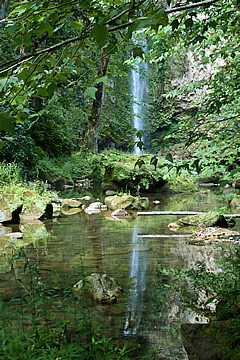
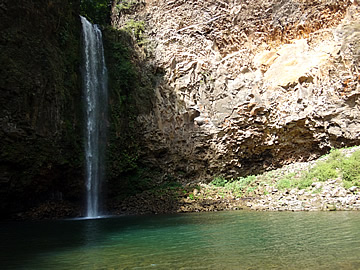
There are some beautiful tree ferns here which our guide told us are prehistoric and protected.
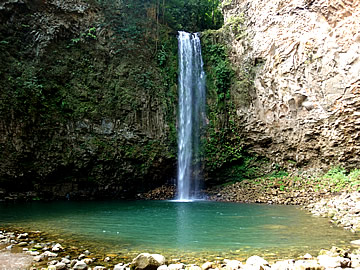
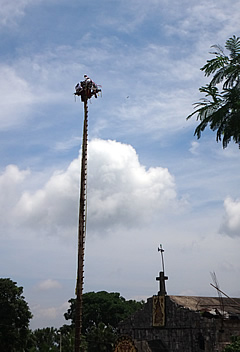
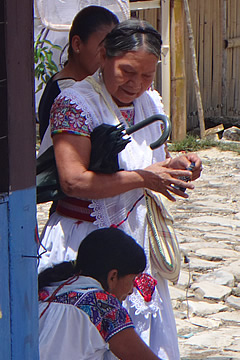
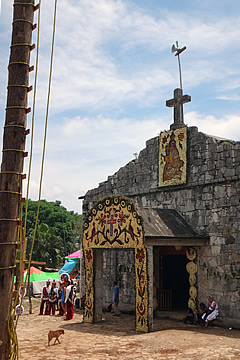
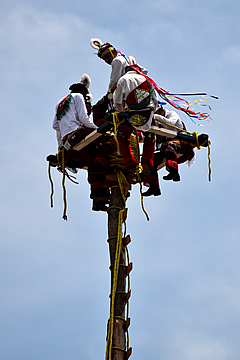
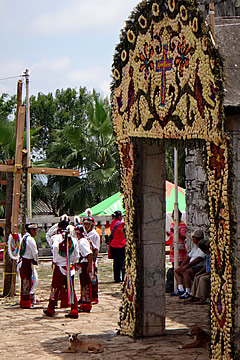
Over the mountains the landscape is very lush and tropical with lots of ferns and banana palms and, in one area, many spiky trees which might have been Joshua trees. We first visited the archaeological site of Yohualichan north east of Cuetzalan before returning for lunch.
In Yohualichan we were incredibly lucky as there was a fiesta and six of the local men were performing a very traditional ceremony descending a tall pole suspended by ropes, doing acrobatics, all dressed in red and white.
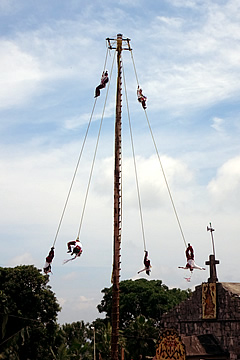
Our guide said he had never seen it done with this many participants before. It is called Danza de los Voladores or Dance of the Flyers and is an ancient Totonac ritual - the Totonacs are the indigenous people of this region.
As with any Mexican fiesta there were a large number of stalls selling freshly cooked food.
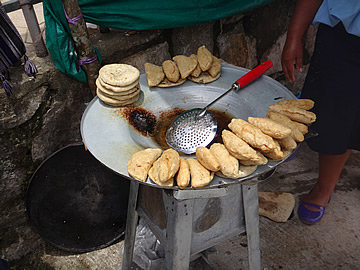
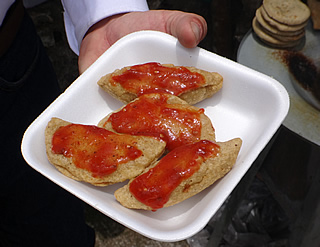
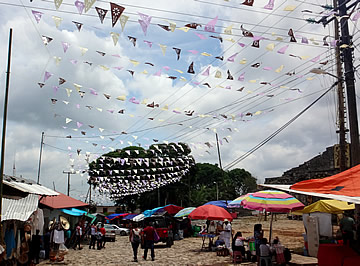
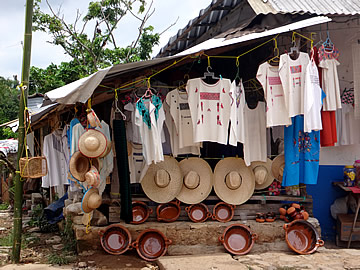
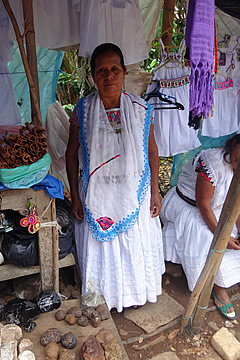
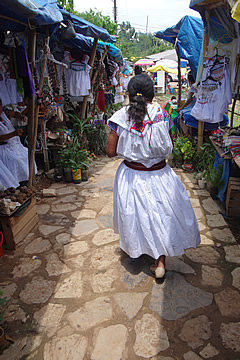
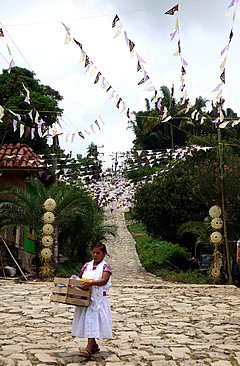
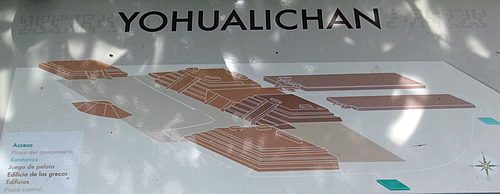
The village fiesta was a lucky bonus. Our main aim in coming to Yohualichan was to see the ancient Totonaca site with very distinctive architecture. The information boards here were very good in providing the history and putting the site in context with other ancient cultures.
Yohualichan is Nahuatl for "House of the Night".
The site was occupied for a very long time, from 400 AD to the conquest in the sixteenth century, reaching its peak around 700-800AD.

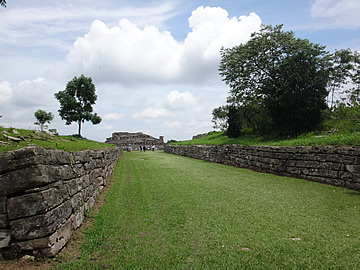
Yohualichan was founded by the Totonacas who are also said to have built the Pyramids of the Sun and Moon at Teotihuacan, and El Tajin and Coatzintla in Veracruz.
Around 800 the Toltecs arrived and were in power for around 400 years, succeeded by numerous other groups.
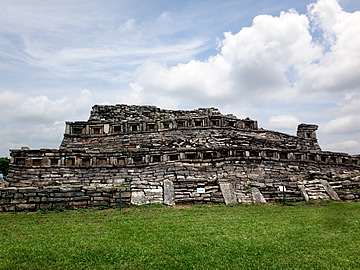
Yohualichan shares an architectural style with the more famous El Tajin, about 50km as the crow flies to the north, and is thus thought to have strong cultural associations with this Gulf of Mexico site - no other sites in Puebla resemble it at all.
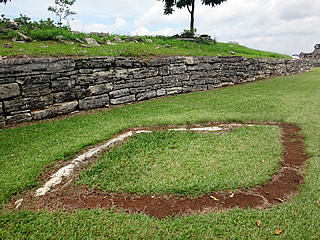
We had certainly not seen anything like it in all our travels, in particular the incorporation of rows of blank window-like niches along the terraces of pyramids.
The main plaza is unusual in having two connected pyramids on the suth side and a third at right angles on the west side forming an unbroken wall around the plaza. At the SW corner is a staircase descending into the plaza.
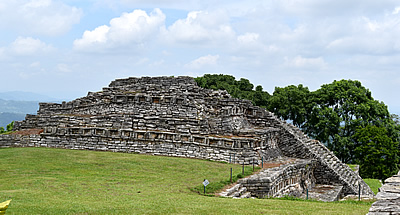
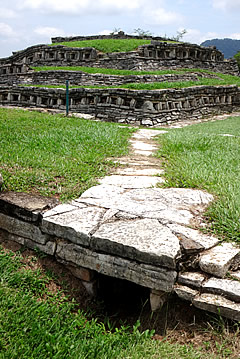
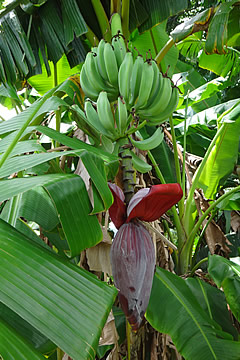 Banana
Banana
Rulers lived in their palaces but the city was run by priests and warriors. Temples, a ball court and administrative buildings were gathered around the central plaza, domestic buildings outside. Terraces were strengthened with retaining walls to provide sturdy platforms for homes and neighbourhood chapels.
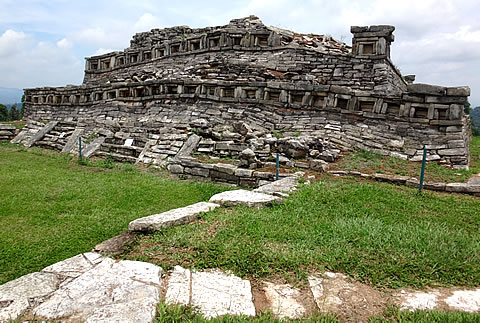
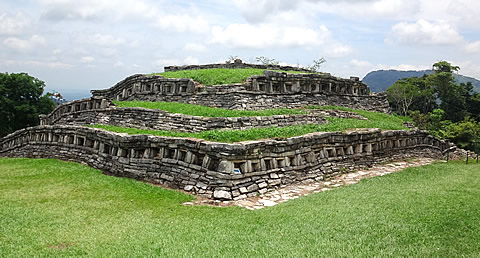
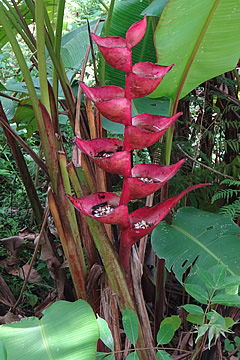
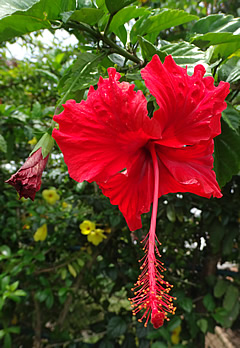
In an extraordinarily fertile region, warm with year-round rain, the vast majority of the people have always worked on the land. It is for this reason that Yohualichan became very prosperous and a prime target for invasion. Housing patterns in the dispersed farming regions today echo the ancient layout of a palm-bamboo or wooden house on the edge of a corn field.
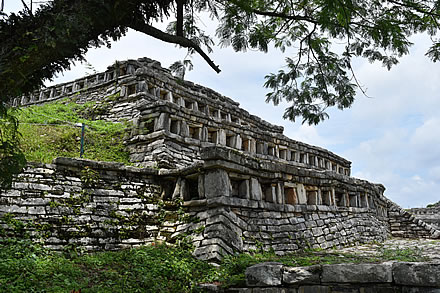
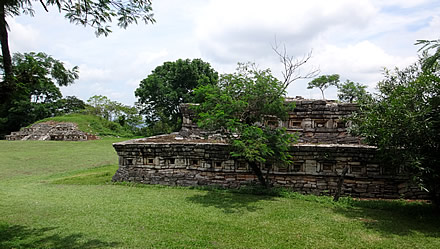

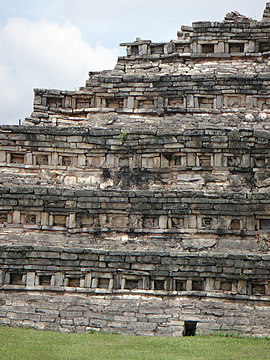
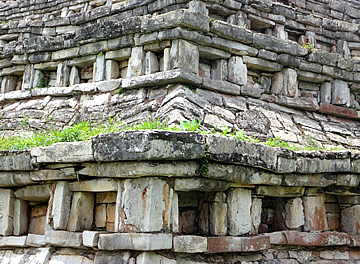
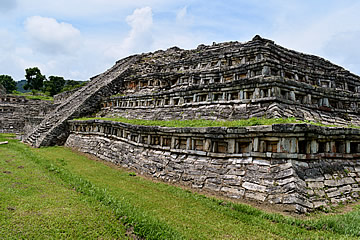
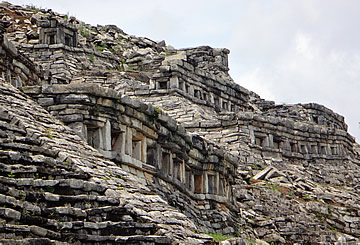
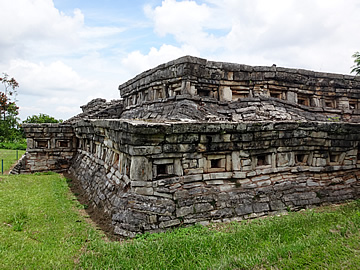
The pyramids are built in a talud-tablero style - stacked platforms of decreasing side with sloped bases - most famously seen at Teotihuacan.
